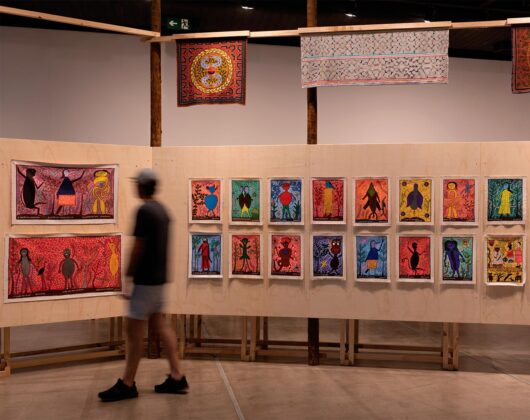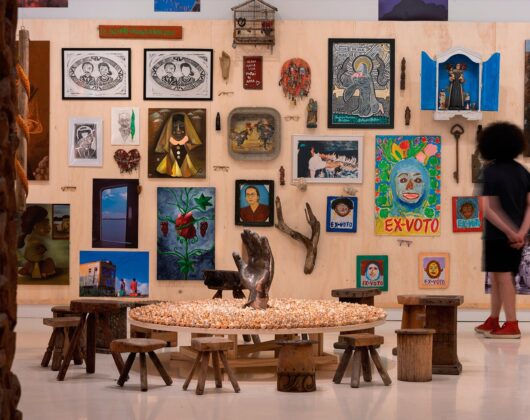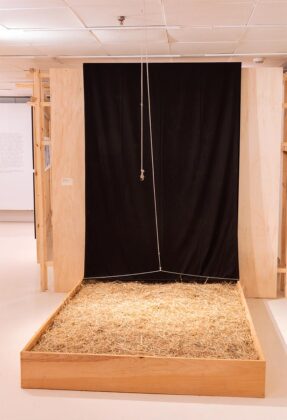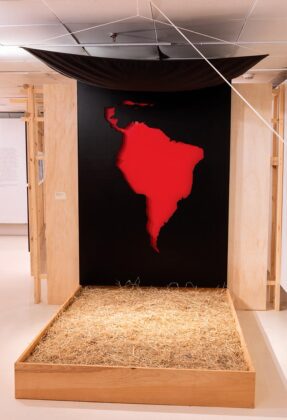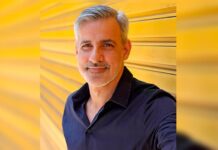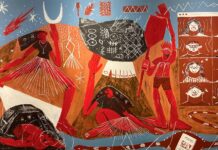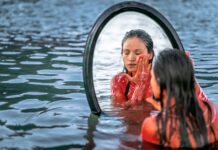Rehearsals for the Museu das Origens, a large exhibition that occupies the Tomie Ohtake Institute and Itaú Cultural until January, revisits and updates the revolutionary proposal presented by critic Mario Pedrosa in 1978, after a fire destroyed the Museum of Modern Art (MAM) in Rio de Janeiro. Faced with the unprecedented crisis faced by the museum, whose need for reconstruction embodied the desire to update in relation to the hegemonic production of large centers, Pedrosa continues in a singular direction. Instead of betting on the chimera of yet another avant-garde project defended by local elites, he turns to the places, identities and constituent elements of a multiple identity, made invisible and full of references to a troubled and incomplete process of national formation. . Instead of a locus of reverberation and reaffirmation of high culture, he conceives a plural museum model, in movement, structured around five major axes: the museums of the Indian, the Unconscious, Modern Art, Black and Popular Arts. The last two didn't even really exist yet and, although the first three were already functioning, they were in a precarious situation at that time, at the end of the military dictatorship.
Taking this proposal as a starting point, almost fifty years later, Ensaios articulates not five, but more than 20 diverse organizations. Some of these movements are small, almost heroic initiatives by individuals or resistance groups, who persistently fight for survival in a profoundly adverse scenario, especially if we consider the recent years of the pandemic and the Bolsonaro government. Others have more institutional solidity. All regions of the country are represented, and fundamental mobilizing issues are covered. But this is not just an attempt to catalog the main or most innovative actions spread across the country.
According to Paulo Miyada, who is responsible for the curation together with Izabela Pucu, the exhibition was above all a work of listening, creating a network and strengthening places, contexts and people. Repertorising, as we saw in initiatives such as the various Stories, told by the Masp curators, is important, but not sufficient. It is the relationship between different perspectives and actions, combining creative, experimental and research practices (as Pedrosa wrote in the diagram he sketched for the Museu das Origens) and the exchange of experiences and dialogue between them that can have this broader effect of contamination, spreading and transformation, encouraging the perception of processes of erasure and domination, which are not restricted only to an ethnicity, a gender or any other criterion but to a class logic. Izabela Pucu, who also coordinates the Mario Pedrosa Platform, summarizes: “By placing, side by side, the cultural manifestations of the consecrated and the excluded, the popular and the erudite, without hierarchies, preserving their differences and conflicts in coexistence, the proposal exposed the complexity of our origin, marked by the colonization processes of the past and today.”
Thus, Pedrosa's proposals continue to reverberate and, despite not having been adopted in practice, they can still be considered a lighthouse, capable of guiding a movement to rescue and fight for cultural and political transformation – two inseparable elements in his thought and his action – but also a powerful critical instrument in relation to the current status quo of the art system, increasingly exclusionary and subject to the weight of institutions and the market.
The interaction between agents is also fundamental in the attempt to institute a process of reconfiguration and spread of new ways of working with collections, memory and a broader, more inclusive and generous conception of art. The number of participants was also determined by the objective conditions. After all, as Miyada reminds us, if there were more time or more space, the exhibition settings would be completely different. Or, as Sofia Fan, manager of the Visual Arts and Collections Center at Itaú Cultural, says, “we know that we have only touched the tip of the iceberg”.
Rehearsals have as their fundamental principle the work carried out by many hands. Together with the general curatorial team, the structure of each of these organizations was called upon to establish a way of telling their stories, invariably marked by challenges and overcoming obstacles. The whole thus seems to unfold into smaller autonomous and at the same time connected nuclei. They rescue, here and there, the importance of other figures and other interlocutors fundamental to the thought of Brazilian culture from the XNUMXth century onwards, such as Emilio Goeldi, Mário de Andrade, Darcy Ribeiro and Lina Bo Bardi. In addition to these best-known names, other scholars, thinkers and activists were also remembered, such as Guilherme Tiburtius, who did silent and precious work studying, preserving and cataloging middens. The volume of texts, documents, letters, photographs and iconographic material is impressive and sometimes predominates in relation to the expressive, poetic core present in each of the segments.
The documentary primacy is, however, counterbalanced, firstly, by the presence of important sets of collections, such as those brought by the Museus Mineiros, Acervo da Laje and Museu do Índio centers. According to Sofia Fan, “the curators were very happy to bring not that predictable content, to look at museologies”, in a type of rescue that can inspire new projects. The presence of reference works (by authors such as TGO, Antonio Manuel, Mira Schendel or Ubirajara Ferreira Braga) or commissioned works is also essential, together with a majority of female artists around places and issues fundamental to the research. Highlights, for example, are the research and re-elaborations that Andreia Hygino and Josi developed based on their experience in two places of great symbolic strength: the Valongo pier, the largest disembarkation port for slaves in the world, and Serra da Capivara, where are the oldest records of rock art in the Americas and the largest site of its kind in the world. The small ceramic piece created by Josi based on the observation of ancestral paintings, seems to embody the idea of “origins”, in the plural, by configuring an anthropomorphic figure that refers (in material, form and gesture) to the oldest ones shaped in the territory today occupied by Brazil and which has a single head but countless feet.
A congregation of forces similar to the one that animates Pedrosa's visionary project and which is present in several projects developed by the critic, such as his Arte, Alegria de Viver exhibition project, which was already at an advanced stage of organization when MAM caught fire. A congregation in which some of the central elements of his thought echo: the articulation between art and politics, the idea of creation as an emancipatory exercise, the view that art is not a fraternity only for specialists or even combats the notion of art as a mere commodity. By a happy coincidence, it is possible to learn a little more about critical radicalism in the exhibition Ocupação Mario Pedrosa, an exhibition that covers the critic's trajectory and was organized in parallel to Ensaios by Itaú Cultural. A fundamental rescue if we take into account that, despite being one of the main critics active in the country throughout the 12th century, he is little read. Izabela Pucu recalls with amazement that, during her XNUMX years of study at the Federal University of Rio de Janeiro, she was never asked to read a text of her own. In addition, an extensive catalog with a record of the processes, documents and works present in Ensaios should be launched in December.


